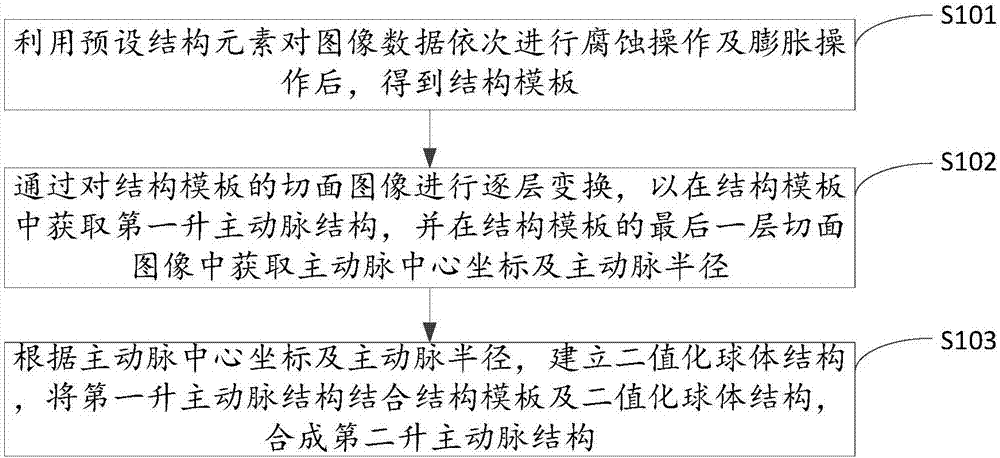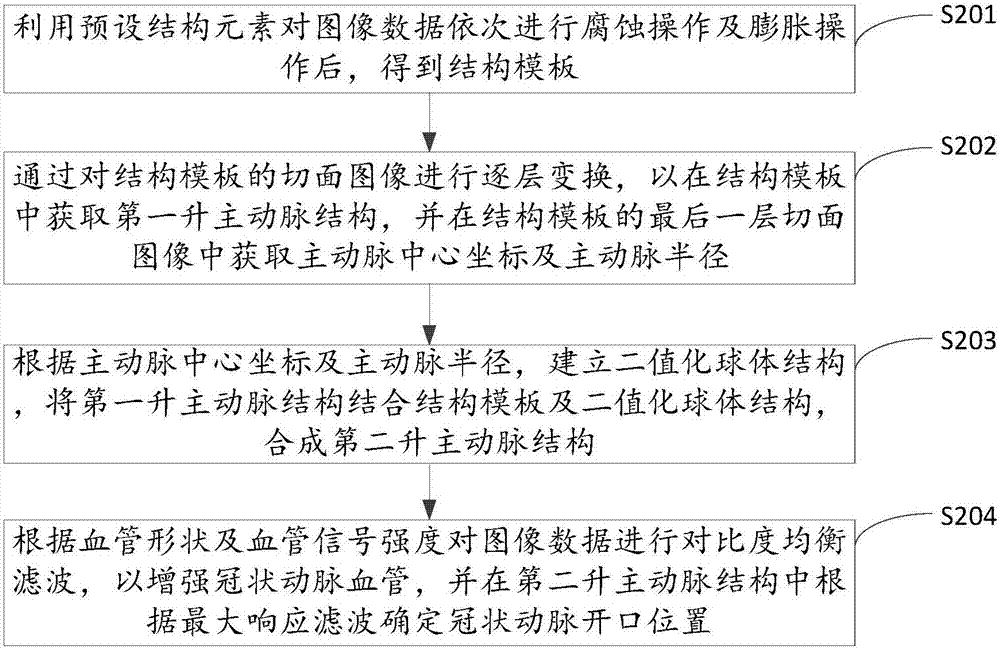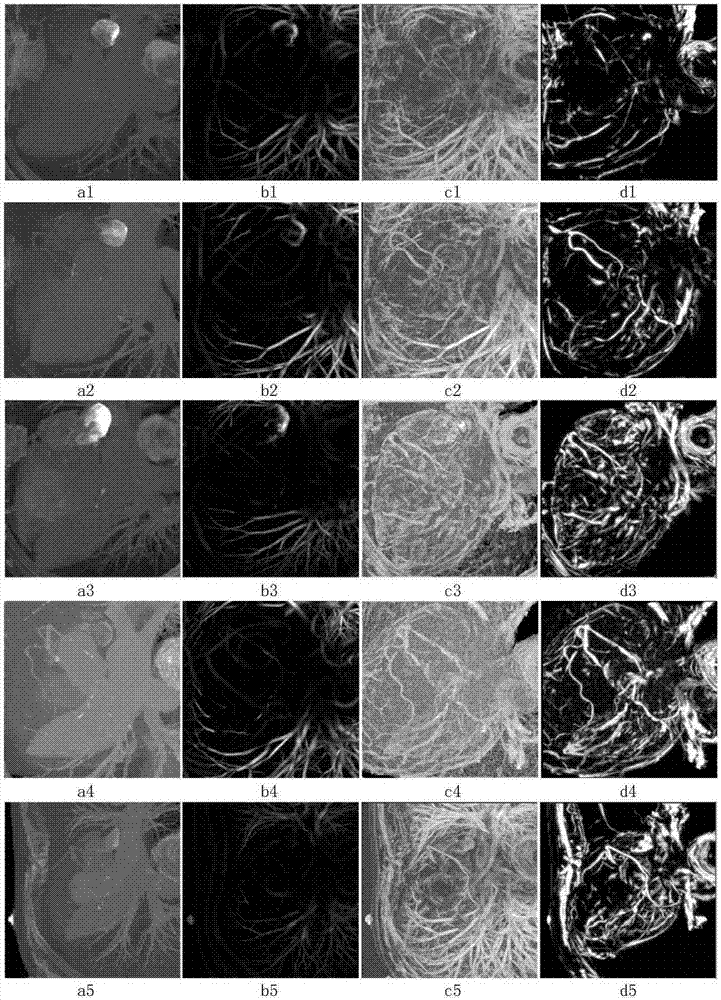Method for extracting cardiovascular vessels from CTA images, device, apparatus and storage medium
A cardiovascular and image-based technology, which is applied in the fields of equipment and storage media, methods for extracting cardiovascular systems, and devices, can solve problems such as the structure of pulmonary vessels and the inability to extract cardiovascular methods, and achieve the effect of improving the level and ability of solving
- Summary
- Abstract
- Description
- Claims
- Application Information
AI Technical Summary
Problems solved by technology
Method used
Image
Examples
Embodiment 1
[0023] figure 1 It shows the implementation process of the method for extracting cardiovascular in CTA images provided by Embodiment 1 of the present invention. For the convenience of description, only the parts related to the embodiment of the present invention are shown, and the details are as follows:
[0024] In step S101, the image data is sequentially corroded and dilated by using preset structural elements to obtain a structural template.
[0025] In the embodiment of the present invention, the above-mentioned image data is a coronary angiography image after down-sampling processing. For the large-scale original CTA data, in order to quickly extract the large-scale ascending aorta structure without affecting the accuracy of the structure extraction, it can be Downsample the image size to half its original size. Suppress or weaken some noise in the above image data and some structures that are not related to the aorta, use the preset structural elements, first perform t...
Embodiment 2
[0038] figure 2 It shows the implementation process of the method for extracting cardiovascular in CTA images provided by Embodiment 2 of the present invention. For the convenience of description, only the parts related to the embodiment of the present invention are shown, and the details are as follows:
[0039] In step S201, the image data is sequentially corroded and expanded by using preset structural elements to obtain a structural template.
[0040] In step S202, the first ascending aorta structure is obtained in the structural template by performing layer-by-layer transformation on the slice image of the structural template, and the coordinates of the center of the aorta and the aortic radius are obtained from the last slice image of the structural template .
[0041] In step S203, a binary sphere structure is established according to the coordinates of the center of the aorta and the radius of the aorta, and the second ascending aorta structure is synthesized by comb...
Embodiment 3
[0050] Figure 4 It shows a schematic structural diagram of extracting a cardiovascular device in a CTA image provided by Embodiment 3 of the present invention. For convenience of description, only the parts related to the embodiment of the present invention are shown. Extracting a cardiovascular device in a CTA image includes:
[0051] The structural template acquisition unit 41 is used to use preset structural elements to sequentially corrode and expand the image data to obtain a structural template. The image data is a coronary angiography image after down-sampling processing, and the structural template is to exclude the lung region Structure.
[0052] In the embodiment of the present invention, the above-mentioned image data is a coronary angiography image after down-sampling processing. For the large-scale original CTA data, in order to quickly extract the large-scale ascending aorta structure without affecting the accuracy of the structure extraction, it can be Downsam...
PUM
 Login to View More
Login to View More Abstract
Description
Claims
Application Information
 Login to View More
Login to View More - R&D
- Intellectual Property
- Life Sciences
- Materials
- Tech Scout
- Unparalleled Data Quality
- Higher Quality Content
- 60% Fewer Hallucinations
Browse by: Latest US Patents, China's latest patents, Technical Efficacy Thesaurus, Application Domain, Technology Topic, Popular Technical Reports.
© 2025 PatSnap. All rights reserved.Legal|Privacy policy|Modern Slavery Act Transparency Statement|Sitemap|About US| Contact US: help@patsnap.com



